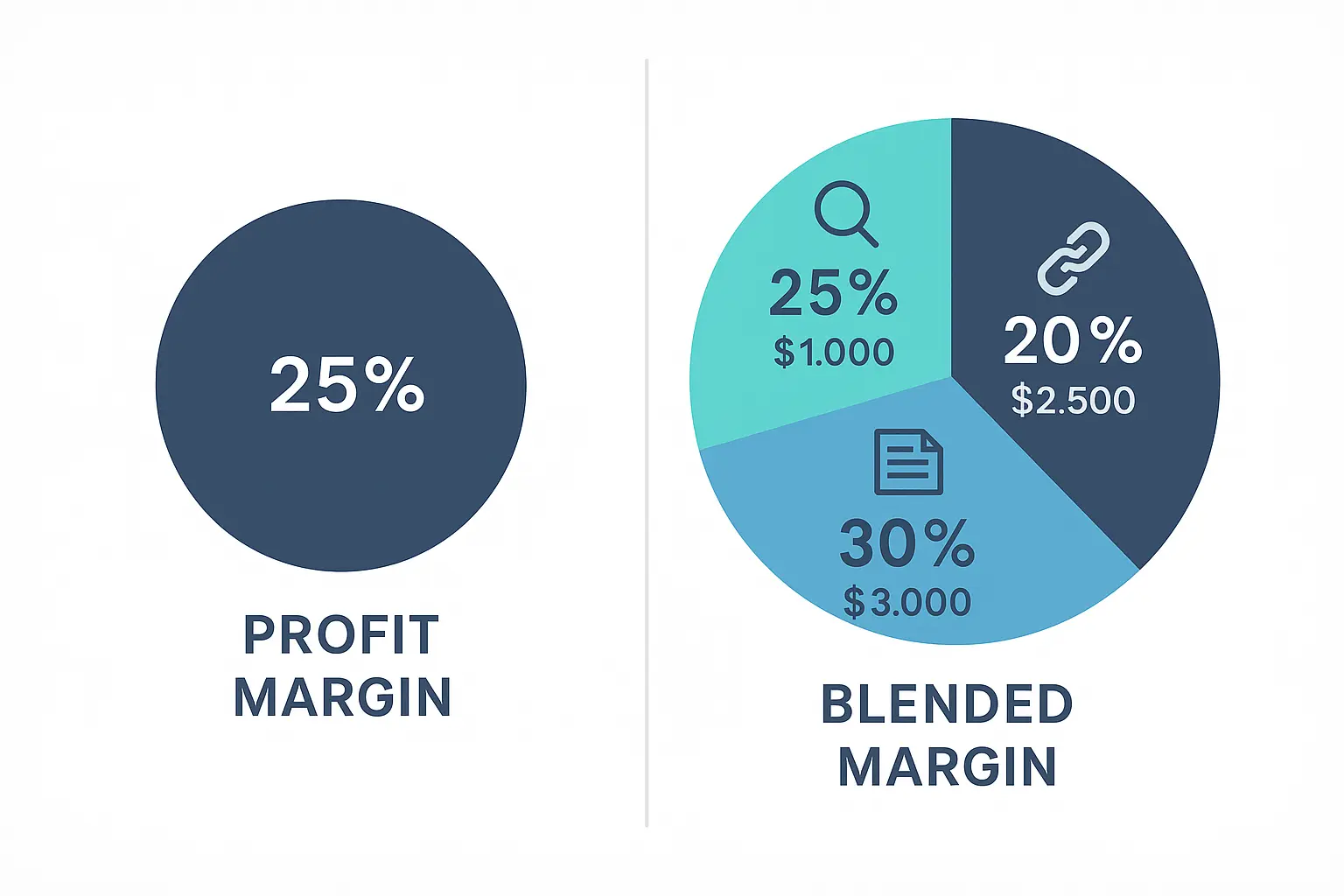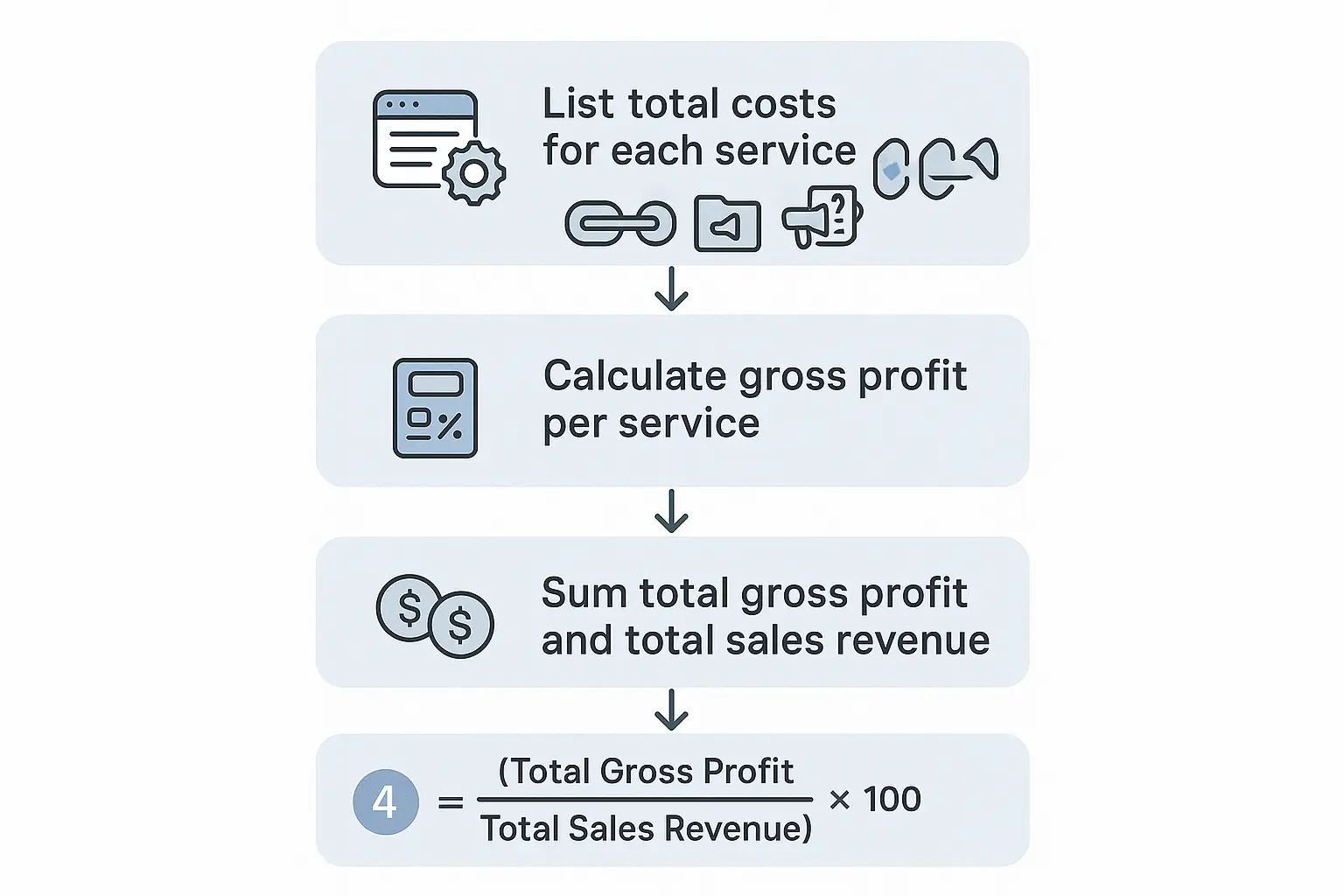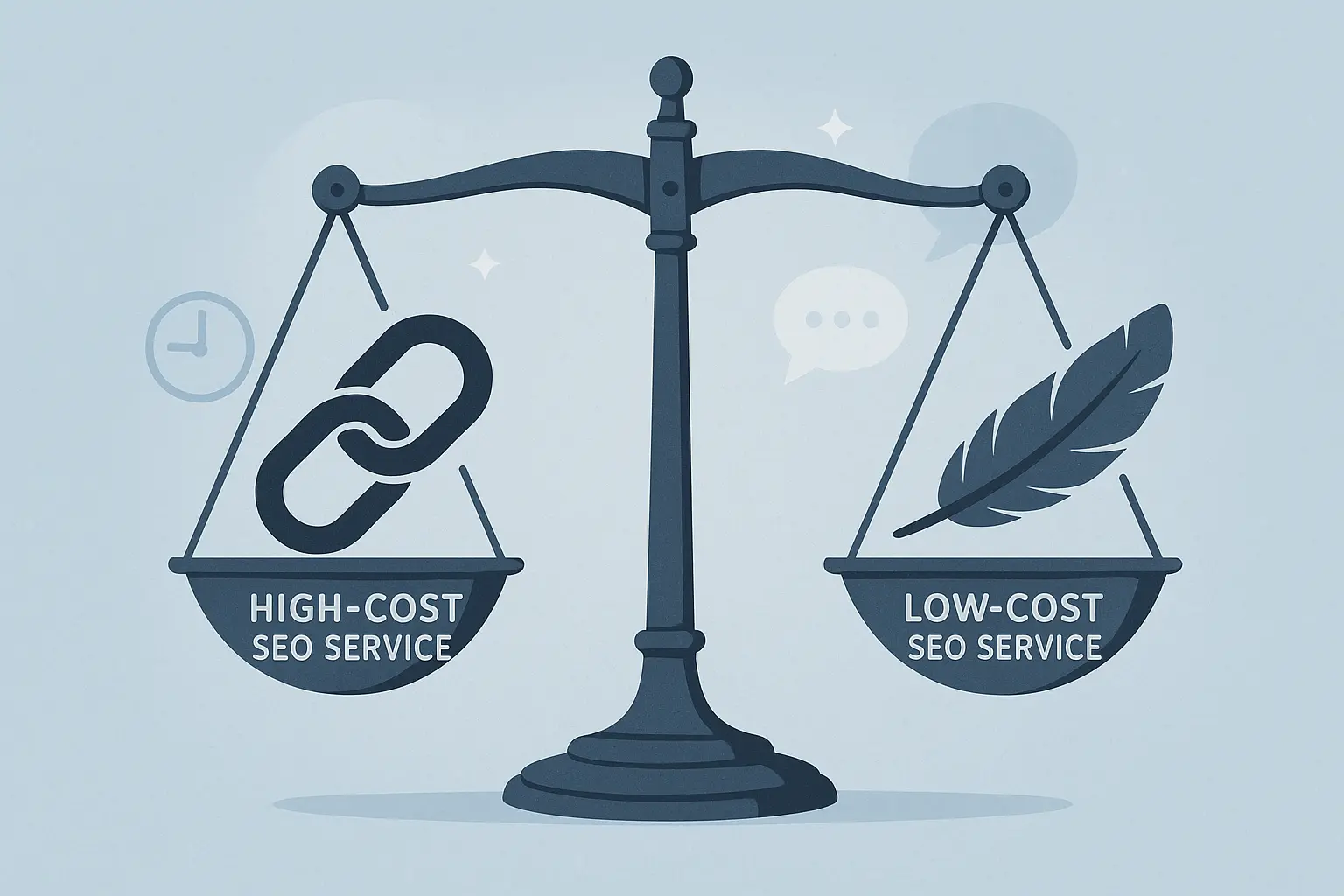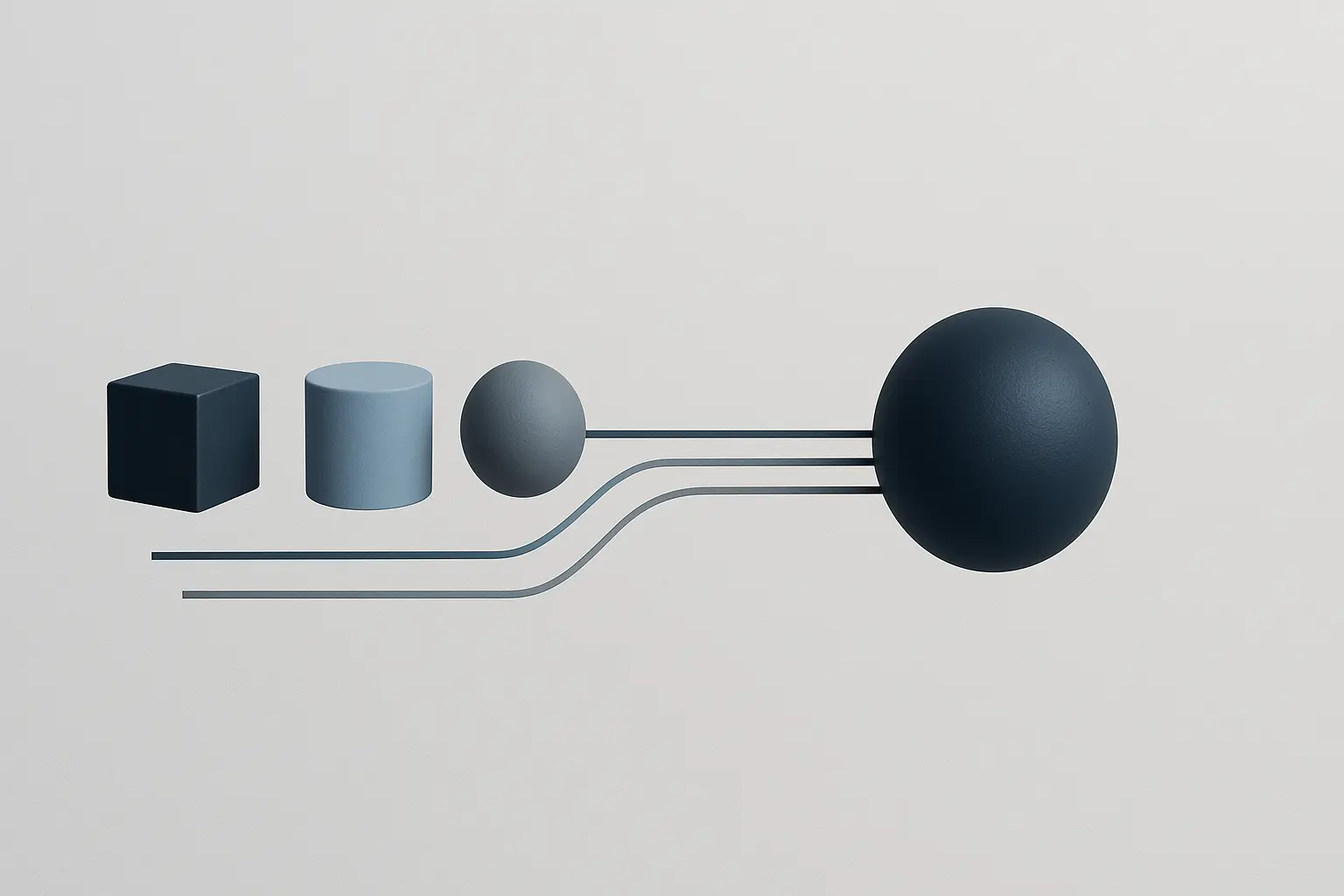You just landed a new client. They need SEO, but not just one service—they want the whole package: a technical audit, ongoing content, link building, and local optimization.
So, you open a spreadsheet. You calculate the cost for each service, add your standard markup, and send over a proposal with four separate line items.
The client pushes back: “Can we get a discount if we take all four?” You reluctantly shave 10% off the total, and just like that, the profit you meticulously planned for vanishes.
If this scenario feels familiar, you’re not alone. A surprisingly low 37% of agencies have a formal pricing strategy—a reality that leads to reactive discounting and squeezed margins. The real problem isn’t the client asking for a deal; it’s treating a strategic bundle as a simple sum of its parts.
The solution is to stop thinking in line items and start thinking in blended margins. This isn’t just financial jargon—it’s a strategic shift that transforms your pricing from a defensive calculation into a powerful tool for growth.
What Are Blended Margins, Really?
Imagine you’re running a coffee shop. An espresso shot costs you $0.50 and you sell it for $3.00 (an 83% margin). Steamed milk costs you $0.25 and you sell it for $1.00 on its own (a 75% margin).
But most people don’t buy them separately; they buy a latte.
A blended margin is the overall profit margin you make on a bundled product—like a latte—that contains components with different individual costs and margins. You’re not focused on the individual profit from the espresso or the milk; you’re focused on the profitability of the final, combined product.
For a digital agency, your “latte” is a bundled service package. It might include:
- High-Margin “Espresso”: SEO Strategy, Technical Audits
- Mid-Margin “Milk”: Content Creation, On-Page Optimization
- Lower-Margin “Syrup”: Certain types of Link Building, Reporting
Instead of selling them à la carte and getting haggled on each price, you create a single, high-value package with one price and one profitable overall margin.

The Psychology of the Bundle: More Than Just a Discount
The real power of bundling goes beyond simplifying your math. It fundamentally changes how clients perceive your value. Research shows that bundled pricing can increase the perceived value of an offer by up to 30%.
Why?
-
It Simplifies the Decision: Instead of evaluating four different services, the client makes one “yes” or “no” decision on a complete solution to their problem.
-
It Signals a Cohesive Strategy: A bundle communicates that you have a holistic plan where each component works in concert. This positions you as a strategic partner, not just a service provider hired to complete a checklist.
-
It Creates Stickier Clients: When a client’s entire SEO success is tied to your integrated package, they are far less likely to churn. This is critical because agencies that retain 80% of their clients are twice as profitable as those with lower retention rates.
Bundling isn’t about giving things away for less; it’s about creating a product that is greater (and more profitable) than the sum of its parts.
The 4-Step Formula for Calculating Profitable Blended Margins
Ready to put this into practice? Here’s a straightforward process for creating and pricing your own bundled SEO packages.
Step 1: Calculate Your True Cost of Goods Sold (COGS)
Before you can set a price, you need to know your absolute floor. For each service you plan to include in a bundle, calculate the total cost to deliver it. This includes:
- Labor Costs: The hourly rate of the team members involved multiplied by the hours required.
- Tool & Software Costs: The portion of your subscription fees (e.g., Ahrefs, SEMrush) used for that service.
- Partner Costs: The cost of outsourcing any components, such as using a provider for white-label SEO services.
Example COGS Breakdown:
Technical SEO Audit: $400
Monthly Content (4 Articles): $800
Link Building Campaign: $600
Step 2: Determine Your Target Margin for Each Service
Not all services deliver the same value or require the same effort. Your specialized, high-impact services should command higher margins.
Technical SEO Audit (High strategic value): Target 70% Margin
Monthly Content (Consistent execution): Target 50% Margin
Link Building (Often involves pass-through costs): Target 40% Margin
Step 3: Build Your Bundle and Calculate the Total Cost
Now, combine the services into a logical package. For this example, we’ll call it the “Growth SEO Bundle.”
Total Bundle Cost (Your COGS):
$400 (Tech SEO) + $800 (Content) + $600 (Link Building) = $1,800

Step 4: Apply Your Desired Blended Margin to Set the Final Price
Now, let’s bring it all together. Instead of marking up each item, you’ll apply one blended margin to the total cost. Let’s aim for a healthy blended margin of 60%.
The formula is: Final Price = Total Cost / (1 – Desired Margin)
Let’s plug in our numbers:
Final Price = $1,800 / (1 – 0.60)
Final Price = $1,800 / 0.40
Final Price = $4,500
You can now confidently present a single price of $4,500 for a comprehensive “Growth SEO Bundle,” knowing you’re securing a strong 60% overall margin. You’ve created a high-value package that’s easy for the client to understand—and highly profitable for your agency.
Beyond the Math: Strategic Levers for Profitability
Once you’ve mastered the formula, you can use strategic levers to make your bundles even more effective and profitable.
Lever 1: Anchor with High-Margin Services
Always build your bundles around a core, high-margin service like strategy or a deep-dive audit. This “anchor” service frames the value of the entire package and gives you more flexibility on the margins of other components.
Lever 2: Make Your Content the Core
Content is the engine of modern SEO. With 91% of B2B buyers saying their decisions are influenced by content, making it a non-negotiable part of your bundle is crucial. It demonstrates long-term value and deepens the client relationship month after month, which is essential for learning how agencies can scale SEO effectively.
Lever 3: Lower Your COGS with Automation
Your profit margin is a direct function of your price and your cost. While you can only raise prices so much, you can almost always improve efficiency. Using AI-powered SEO automation for tasks like reporting, rank tracking, and initial site crawls can significantly reduce your labor costs (your biggest COGS), directly boosting the profitability of every bundle you sell.

Frequently Asked Questions (FAQ)
What’s a good blended margin for an agency to aim for?
While this varies, a healthy target for most bundled digital marketing services is between 50% and 70%. Anything below 40% may not leave enough room for overhead, sales costs, and net profit.
Should I show the prices of the individual services next to the bundle price?
Generally, no. This invites haggling and encourages clients to see the bundle as a collection of parts rather than a single solution. Present the bundle as a unique product with its own value and price.
What if a client only wants one service from the bundle?
That’s fine. You should have separate, à la carte pricing for individual services. The key is to make your à la carte pricing significantly less attractive than the bundle. For example, the sum of the individual services should be 20-30% higher than the bundled price to make the bundle the obvious choice.
How does bundling affect client reporting?
It simplifies it. Instead of covering disparate tasks, you can deliver a holistic performance report that ties all activities (content, technical fixes, links) back to the primary goals—traffic, leads, and revenue.
Your Pricing Is Your Strategy
Moving from line items to blended margins is more than a financial adjustment; it’s a strategic declaration. It tells clients that you’re a partner who provides comprehensive solutions, not a freelancer who completes tasks.
By bundling your services around a core strategy, pricing them for value, and delivering them efficiently, you create a scalable, profitable engine for growth—turning complex client needs into your agency’s most valuable asset.

